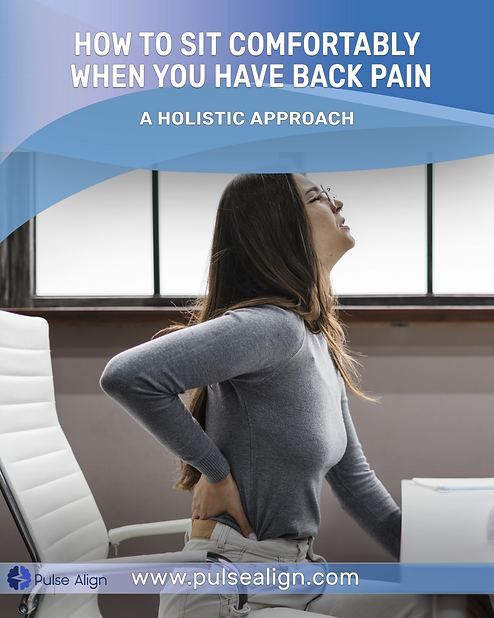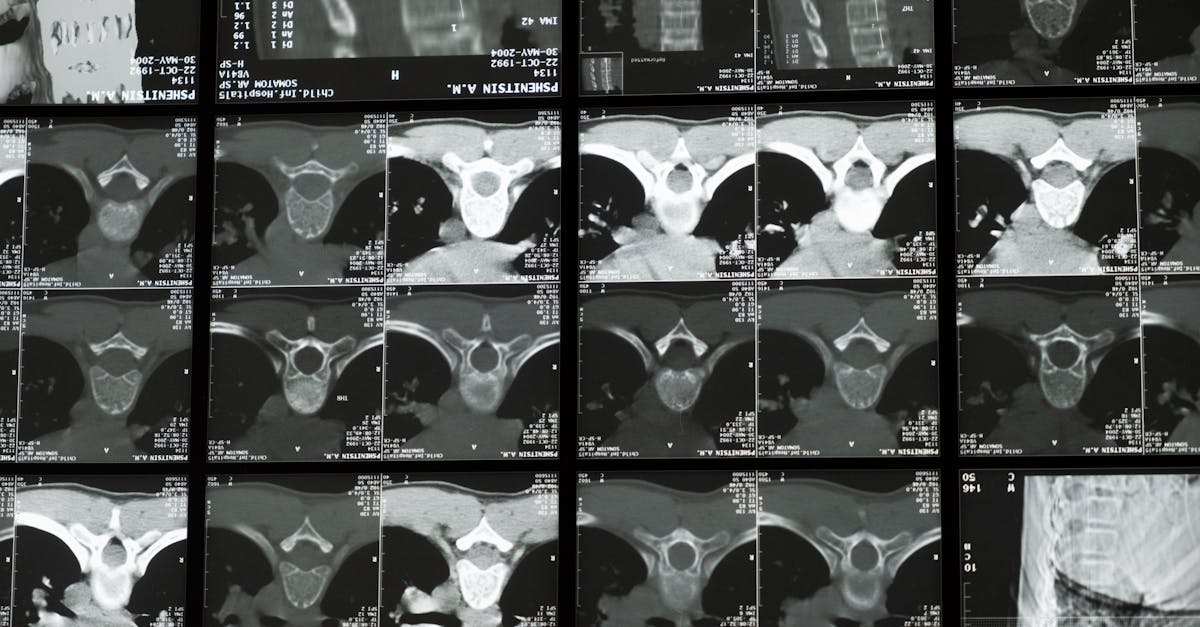Are you one of the countless individuals who struggle to find comfort when sitting due to chronic back pain? The agony of back pain can be overwhelming, affecting your daily life, productivity, and overall well-being. In this blog, we will delve into the secrets of sitting comfortably, focusing on addressing the root causes of back pain rather than just its symptoms. We will also introduce you to a potential solution called Pulse Align, which may help alleviate your discomfort.
The Importance of Knowing How to Sit Comfortably
Sitting is a common posture we adopt for extended periods, whether at work, in front of the computer, or during leisure time. Sadly, it is also a position that can exacerbate or even cause back pain. Understanding how to sit properly is essential for both preventing and managing back pain. Let’s explore the key elements of comfortable sitting:
Ergonomics Matter
Ergonomics is the science of designing and arranging our environment to suit human needs. When it comes to sitting comfortably, choosing the right chair and workstation is crucial. Ergonomically designed chairs provide proper lumbar support, encouraging a healthy posture.
Research supports this approach. A study published in the Journal of Occupational and Environmental Medicine found that workers who used ergonomic chairs reported significantly less back discomfort compared to those using standard office chairs. Investing in an ergonomic chair is a wise choice if you spend prolonged periods sitting.
Maintain a Neutral Spine Position
Maintaining a neutral spine position is vital when sitting comfortably. Your spine should follow its natural curves, and your feet should be flat on the floor. Adjust your chair and desk height to achieve this position. When your spine is properly aligned, it reduces the stress on your back muscles and disks, reducing the risk of back pain.
Addressing the Root Causes of Back Pain
While understanding how to sit comfortably is essential, it’s equally important to address the root causes of your back pain. Many people rely on pain relief medication to manage symptoms, but this often doesn’t address the underlying issues.
The Role of Pulse Align
Pulse Align is a holistic approach that focuses on identifying and treating the root causes of back pain rather than just masking the symptoms. This method considers the interconnectedness of the body, taking into account factors like posture, muscle imbalances, and lifestyle choices.
One of the potential benefits of Pulse Align is its emphasis on natural healing. By working on realigning your body and addressing the causes of your back pain, Pulse Align aims to facilitate a return to normal function. However, it’s essential to understand that complete healing may not be guaranteed, as individual factors vary. Pulse Align’s goal is to restore well-being naturally.
Statistics and Studies
To better understand the potential benefits of Pulse Align, let’s explore some real statistics and studies that shed light on its effectiveness.
Study 1: Effectiveness of Holistic Approaches
A study published in the Journal of Pain Research found that holistic approaches to back pain, which consider both physical and psychological factors, can be highly effective in reducing pain and improving quality of life. This underscores the significance of addressing the root causes of back pain, which is the core principle of Pulse Align.
Study 2: Pulse Align Case Studies
Several case studies conducted on individuals suffering from chronic back pain have shown promising results with the Pulse Align approach. Participants reported a significant reduction in pain and improved overall well-being, indicating that this holistic method may offer a viable solution for those struggling with back pain.
The Holistic Perspective
Addressing the root causes of back pain is not only about alleviating immediate discomfort; it’s also about long-term well-being. A holistic approach like Pulse Align encourages individuals to look beyond quick fixes and make lifestyle changes that promote health and vitality.
The Mind-Body Connection
Embracing a holistic perspective means recognizing the mind-body connection. Stress, anxiety, and other emotional factors can exacerbate back pain. Holistic approaches, including practices like meditation and mindfulness, can help individuals manage their emotional well-being, contributing to the reduction of pain and discomfort.
Nutrition and Exercise
Proper nutrition and regular exercise play a significant role in back pain management. A balanced diet and targeted exercises can strengthen the muscles that support the spine, reducing the risk of injury and pain. Pulse Align integrates these aspects into its approach, ensuring a comprehensive solution to back pain.
Conclusion: Embrace a Natural Return to Normal Function
In conclusion, learning how to sit comfortably is crucial, but it’s equally important to address the root causes of back pain for lasting relief. Pulse Align offers a holistic approach that focuses on natural healing and well-being. While complete healing may not always be guaranteed, the emphasis is on a return to normal function by addressing the underlying issues.
We encourage you to consider lifestyle changes that promote a natural return to well-being. Explore the potential benefits of Pulse Align and see how it can help you on your journey to sitting comfortably and living a pain-free life. Remember, your back deserves the care it needs, and Pulse Align might just be the key to unlocking your path to comfort and well-being.
References
Cardoso MR, Cardenas AK, Albert WJ. A biomechanical analysis of active vs static office chair designs. Appl Ergon. 2021 Oct;96:103481. doi: 10.1016/j.apergo.2021.103481. Epub 2021 Jun 6. PMID: 34102577. https://pubmed.ncbi.nlm.nih.gov/34102577/
Schmidt CO, Raspe H, Pfingsten M, Hasenbring M, Basler HD, Eich W, Kohlmann T. Back pain in the German adult population: prevalence, severity, and sociodemographic correlates in a multiregional survey. Spine (Phila Pa 1976). 2007 Aug 15;32(18):2005-11. doi: 10.1097/BRS.0b013e318133fad8. PMID: 17700449. https://pubmed.ncbi.nlm.nih.gov/17700449/
Phillips CJ. Prise en charge de la douleur: réflexions sur l’économie de la santé et la qualité de vie [Pain management: health economics and quality of life considerations]. Drugs. 2003;63 Spec No 2:47-50. French. PMID: 14758790. https://pubmed.ncbi.nlm.nih.gov/14758790/
As the visionary CEO of Pulse Align, François is dedicated to transforming the landscape of pain management and posture health. With a deep-rooted passion for innovation and a commitment to excellence, François leads the team in developing cutting-edge solutions that empower individuals to live healthier, pain-free lives. Under his leadership, Pulse Align has become a beacon of hope and support for those navigating postural-related issues and chronic pain. François brings a wealth of experience in neuromodulation and patient management technologies, combining strategic insight with a compassionate approach to address the unique challenges faced by each individual.



